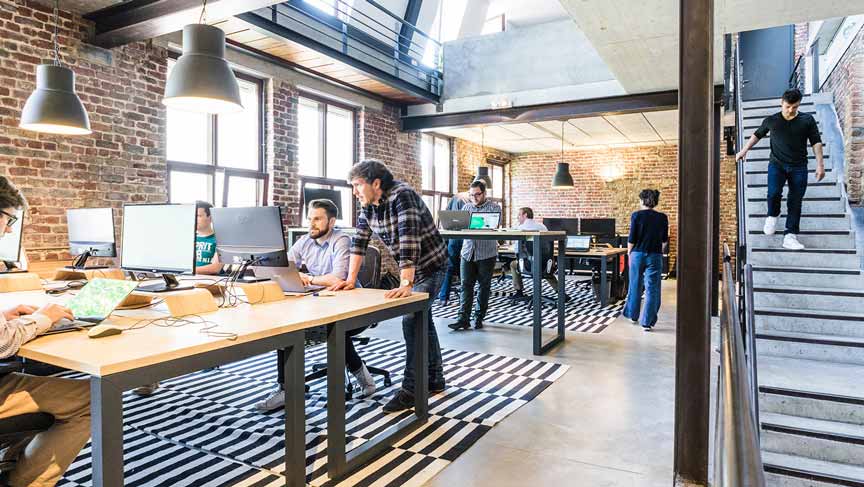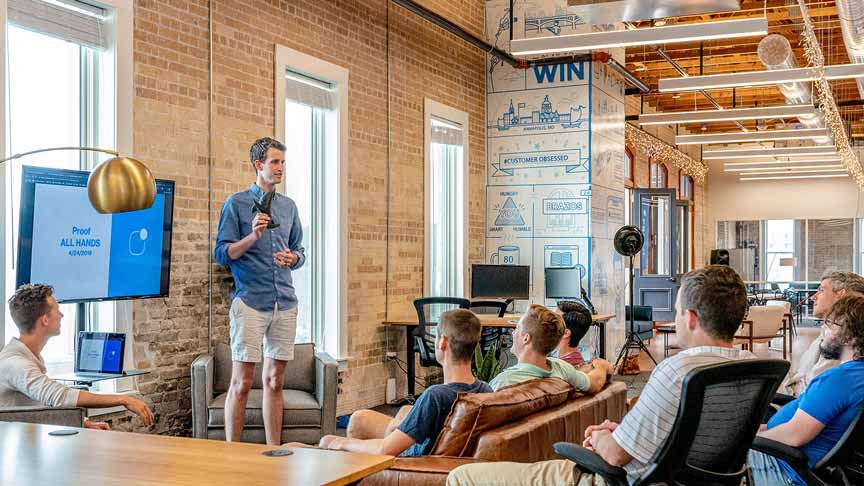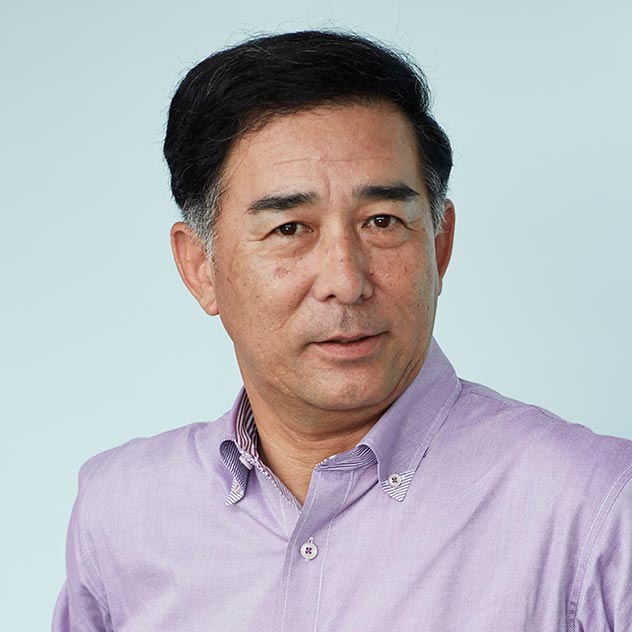Towards a new society brought about by the COVID-19 pandemic;
A roomy design that creates rich encounters, interactions and new innovations
Katsuya KAWASHIMA, Executive Vice President, Representative Member of the Board, Head of Client Relations & Solutions Department, NIKKEN SEKKEI LTD
(The positions in this article were current at the time of publication.)
Scroll Down
Since primitive times, humans have learned to trust, empathize and resonate with each other through the human body and its five senses. We have used these senses to guide us as we gather, meet and inspire each other, spawning innovation at multiple levels.
Now, during the post-COVID-19 period, I think it is time for us to to take a close second look at the role and meaning of the senses.
The perspective of “designing loosely” might provide one possible direction.
 Katsuya KAWASHIMA, Executive Vice President, Representative Member of the Board, Head of Client Relations & Solutions Department, NIKKEN SEKKEI LTD
Katsuya KAWASHIMA, Executive Vice President, Representative Member of the Board, Head of Client Relations & Solutions Department, NIKKEN SEKKEI LTD
(The positions in this article were current at the time of publication.)
What I felt while staying at home
Measures to grapple with the COVID-19 crisis have accelerated our adoption of future lifestyles in which people can communicate without direct face-to-face encounters, including working at home, online diagnoses and distance learning. These are approaches to living that the Japanese government was originally trying to promote through its concept of Society 5.0. Also, a lot of people ended up completing most of their lives during the stay at home period in their own homes.
Underpinned by the evolution of IT, these changes will continue to overcome the distance between people in dramatic fashion.
Even so, I feel that this evolved lifestyle is missing something irreplaceable.
Since primitive times, humans have evolved by gathering. Humans cannot exist alone, so we formed groups, through which we developed civilization and culture. We seem to have trusted, empathized and resonated with each other through the human body and its five senses as we gathered, met and inspired each other, spawning innovation at multiple levels.
That DNA remains with us today.
I think the greatest difference and unfilled gap between humans and AI may line in AI’s lack of these fundamental sensibilities of trust, empathy and resonance.
We mustn’t forget this.
Undoubtedly humans will continue to be free to choose their lifestyles, depending on the day and time, including remote work and coming to work with our children. We will have made a clean break from the set lifestyle of gathering in predetermined places at predetermined times for specific activities. A dramatically broader range of options will be at our fingertips.
One emerging concept is the 30-minute urban area. These are urban communities incorporating multiple “towns” with unique personalities and cultures linked in a mosaic. In this new type of urban milieu, we can freely choose and enjoy our own ”places" depending on our purposes.
Design loosely
This development constitutes the emergence of places where we can gain abundant empathy and resonance by dropping in without any particular purpose. “Looseness” and “play” in those spaces, created by remote work, working at home and the like, will make this possible.
In this vision, an office may seem all at once to be a home, a school and a restaurant. It will be a slightly “roomy” space that can be modified into any of the above. It is no longer at all strange for such an ideal workplace or school, once only faintly dreamed of, to emerge.
I believe that the time will come for the concept of “designing loosely” in the future.
-
 ©unsplash.com
©unsplash.com
-
 ©www.useproof.com
©www.useproof.com
The linchpin concept is safety, security and health.
The COVID-19 pandemic has changed these prerequisites fundamentally. This is often the case with unexpected natural disasters, of which we hear so often these days. As designers, however, we mustn't dismiss our duty to grapply with these phenomena simply by saying they are unexpected. On the other hand, it is true that we cannot always build assuming the greatest risks and conditions.
In the planning process, "loose” planning does not seek a single solution without limit. Some elasticity or play is essential for future adaptation.
Is it not possible to create cities and architecture with operational variability based on safety, security and health, depending on their circumstances, by setting a series of modes, from a normal mode to an emergency mode, with several intermediate modes in between?
Is it not possible to gently harness people's sense of density and affinity for nature, to live with a sense of security? I think that such a loose plan, with its diverse mix of features and sensibility evolved to switch modes according to the situation, will be required to create cities, buildings and spaces in the future.
Coexistence between nature and humanity
The COVID-19 disaster must never be regarded as a discrete event but as a continuous one, from the point of view of the history of nature and human engagement. The fight against COVID-19 will continue.
Yet the crisis also provides us with an opportunity for a quantum leap in evolution.
Instead of trying completely to overcome nature as a whole, including viruses and the like, we must vary our responses. Sometimes we must accept it, at other times we must parry it, and at other times we must block it. A loose design expresses a flexible attitude that cohabits with both the gentle and harsh sides of nature. Could this mindset be the basis for future sustainability?
We are committed to a sincere approach towards cohabitation with nature.
